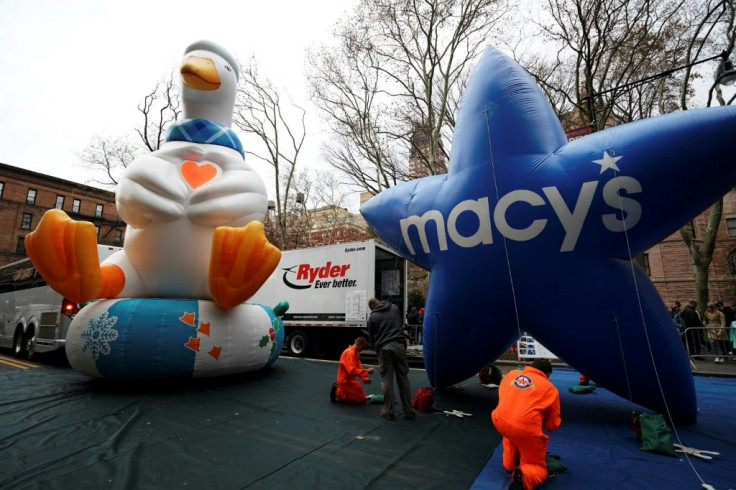Macy's Store Closings: 125 Department Stores Shut Down Over Restructuring

KEY POINTS
- Macy's is determined to thrive against the relentless threat of online retailing
- It's shutting down underperforming department stores and launching new retail concepts to win back customers
- Macy's is also abandoning malls and moving into strip malls or mini malls
Macy's relentless department store closure binge that began in earnest in 2015 continues, with the company on Tuesday revealing plans to close another 125 stores over the next three years. This number includes store closures announced on January 8 that include 29 underperforming stores (28 Macy's locations and one Bloomingdale's location in Miami).
In January 2015, Macy's announced the shutdown of 14 stores nationwide. In September of that same year, Macy's said it would close another 40 underperforming stores by early 2016. It later revealed it saw same store sales declines of 5.2 percent in November and December 2015, the two typically busy holiday shopping months. Macy's laid-off 4,800 employees in January 2016. It has continued large-scale store closures since 2015 as part of a restructuring program that continues to this day.
Analysts said Macy's, as well as other brick-and-mortar retailers, continue to suffer greatly from the expanding reach of online retailing and e-commerce retailers such as Amazon.com. The raft of store closures and employee firings are the direct result of online shopping's immense popularity among Americans.
Apart from closing 125 more stores, Macy's also announced the firing of 2,000 employees, or 10 percent of its corporate and support staff. Macy's will also close several offices, and will abandon a dual headquarters in Cincinnati and transfer all headquarters roles in New York in a bid to cut costs.
"We are taking the organization through significant structural change to lower costs, bring teams closer together, and reduce duplicative work … The changes we are making are deep and impact every area of the business, but they are necessary," said Macy's CEO Jeff Gennette.
Macy's isn't abandoning the brick-and-mortar space but is implementing exciting innovations it hopes will get more people to visit its stores. On Tuesday, Macy's announced the opening of at least five "Market by Macy's" and seven freestanding Macy's Backstage locations by the end of 2020. Market by Macy's are small-format locations around 15,000 sq ft in area.

In November 2018, Macy's announced it would begin testing smaller "neighborhood" stores, which are now Market by Macy's, to slash costs and promote innovation designed to regain customer loyalty. Macy's is also testing a new concept that will take it out of malls (which are less frequented by shoppers) by opening smaller stores in strip centers or mini-malls where more people shop.
“Our goal is to reclaim and revitalize what a department store should be,” said Gennette, who became CEO in 2017. “Department stores are still vital if they are done right. There is viability to having many categories and brands under one roof.”
The cost of Macy's restructuring and do over is massive. Macy's expects $480 million in restructuring charges, but projects savings of $1.5 billion annually by the end of 2022. It projects $600 million in savings in the current fiscal year. Gennette said some of the money will be reinvested in technology and other upgrades.
© Copyright IBTimes 2024. All rights reserved.




















